Few game series are as definitive and beloved as Castlevania. Pitting Players against Dracula and his unholy forces time and again, it is a staple of the industry that has withstood the test of time and continued to enrapture players with tight gameplay and new twists on its well-established norms of exploration and difficult boss battles.
Being as old as it is though, there have been entries that proved better than others, and today we’ve got all 29 titles ranked from worst to best.
*Note: Vampire Killer and Haunted Castle have not been included in this list because they either are a direct port without enough new elements or content to warrant a separate entry (Vampire Killer) or were limited to an arcade release (Haunted Castle)*
The Best Castlevania Games, All 30 Ranked From Worst to Best
30. Castlevania Judgement
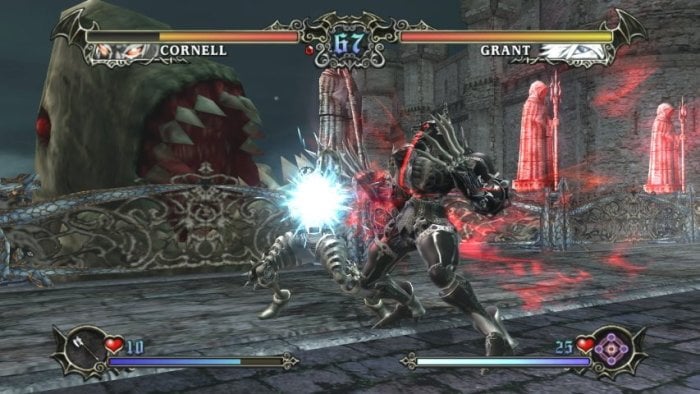
Castlevania Judgement sounded like an interesting game, at least on paper. Pitting characters from across the series’ many entries against each other, each with their own attacks and techniques to dish out, sounded spectacular, and the fact that Death Note artist Takeshi Obata was onboard to lend his talents to the project was icing on the cake.
True, it was on the Nintendo Wii which wasn’t exactly known for good fighters outside Super Smash Bros. Brawl, but there was still some hope that this foray into a new genre would work out for the series.
Then players got their hands on it and all of the game’s hype collapsed in on itself. A clunky, disorienting mess, Judgement failed to capitalize on most every front. The character designs veered too far from any established character designs in the series, the gameplay mechanics were a messy mix of action and fighting games, and there was next to no balance among the characters.
And that’s if players could even get it to work, with the controls proving almost entirely incompatible with the console’s controllers. There’s really nothing else that can be said about the game other than that it’s the most deserving of being forgotten by fans.
29. Castlevania: Order of Shadows
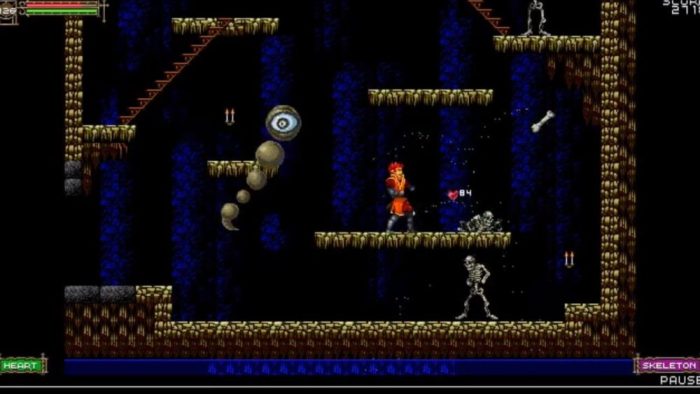
Of the many series that tried to expand into the mobile gaming market, Castlevania seemed like it had a decent chance of striking gold. After all, it’s formula lent itself well to the design restrictions of phone games and could snag players looking for a call back to the 2D entries of old. There was also a refreshing amount of effort put into the game, with a full story written that would utilize characters related to the Belmont clan.
Unfortunately, this wasn’t the case when people got their hands on Castlevania: Order of Shadows, a flat and boring attempt at a Castlevania title. While it still offered a decent soundtrack and world design, the game lacked the difficulty and story that even the original titles offered to players.
It likewise had little to offer to players after a single playthrough, leaving it to be forgotten at worst or at best remembered as one of the most lackluster Castlevania games.
28. Castlevania (Nintendo 64)
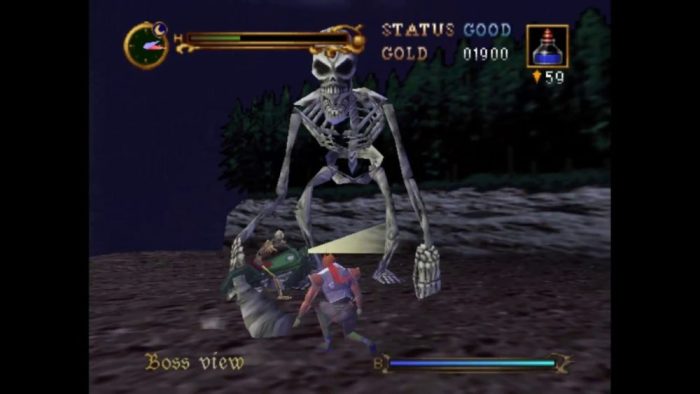
For a long time, fans considered the Castlevania series to be incapable of a true transition to 3D, and this title was the reason why. The first game to make the jump to 3D, Castlevania for the Nintendo 64 had more ambition than it could make good on. It sought to bring the story of the Belmont’s eternal struggle with Dracula into the future, complete with new gameplay and a fully realized recreation of Dracula’s castle in 3D.
While it did well in translating the atmosphere and feel of the Castlevania series, its gameplay was undeniably clunky and unresponsive. Many players found themselves challenged not by enemies or bosses, but by their inability to properly fight them due to the camera moving and rotating seemingly at random.
This was exacerbated by floaty controls that could send the player character soaring across the screen, many times to their death.
The title has since seen debate on its overall quality. Some defend it as an admirable attempt to bring the series forward, while others note it to be a frustrating experiment to play through which relied heavily on the series’ pedigree. Regardless, it stands as a title that didn’t live up to the series’ reputation, and continues to lag behind new releases and iterations.
The Best Castlevania Games, All 30 Ranked From Worst to Best
27. Castlevania: Legacy of Darkness
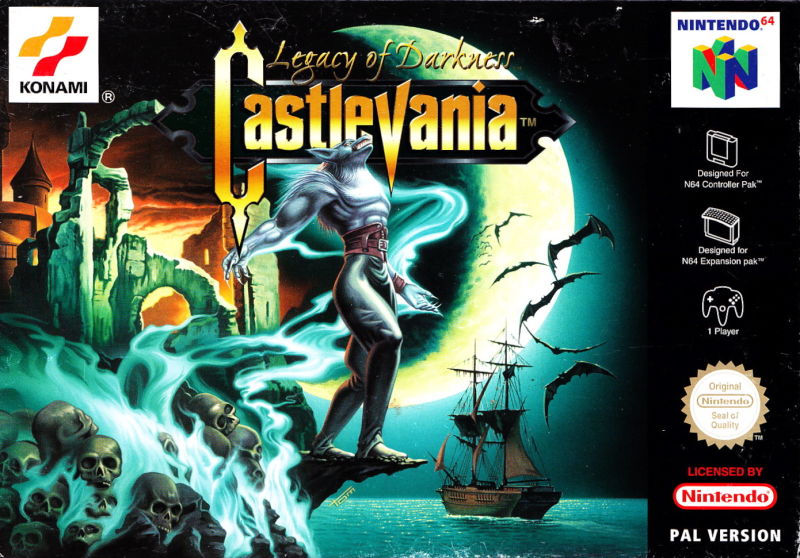
Another less than stellar 3D outing for the series, Castlevania: Legacy of Darkness had some interesting ideas it didn’t quite capitalize on. Like its predecessor, the title brought players back to a 3D version of Dracula’s Castle with a fantastic sense of atmosphere and terrifying enemies.
Likewise, it placed players into the role of Cornell, a man with the ability to transform into a werewolf and rend through monsters as he sees fit, as he tries to stop his sister from being used as a sacrifice for Dracula’s revival.
Unfortunately, the game suffered from much the same problems as the series’ first 3D title, with the controls and camera working against the player constantly. It remains an interesting experimental outing for the series, but also one which players wouldn’t be blamed for if they skipped.
26. Castlevania: Dracula X
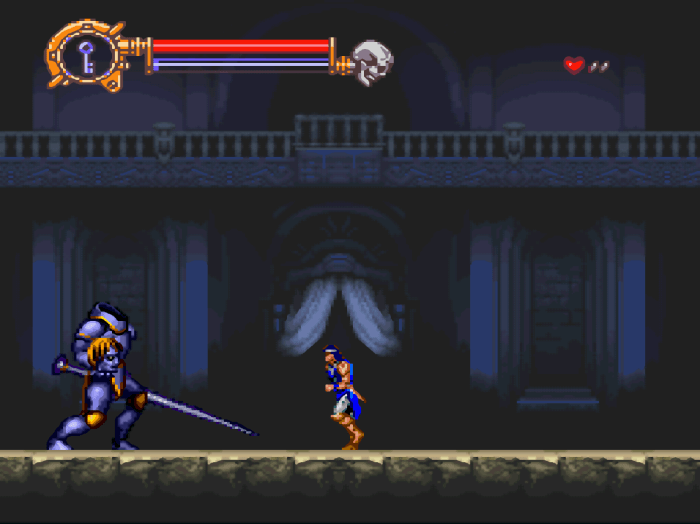
Of the many ports that Castlevania: Rondo of Blood saw over the years, Castlevania: Dracula X was the worst. A version of the game that was redesigned heavily for play on the SNES, it lost much of what made the original version of the game special. Enemy and level design were uninspired, with castle sections and corridors blending together the longer players made their way through the game.
The low difficulty left little for players to feel challenged by, and compared to the SNES’ other Castlevania offering, Super Castlevania IV, it felt like it underutilized the hardware.
The end result was a Castlevania game stripped of all but its most base components and gameplay. Diehard fans could still glean some enjoyment from the title, but as a whole it was better to pass this poorly made port over for the original PC version or one of the later remakes of the game.
25. Castlevania II: Simon’s Quest
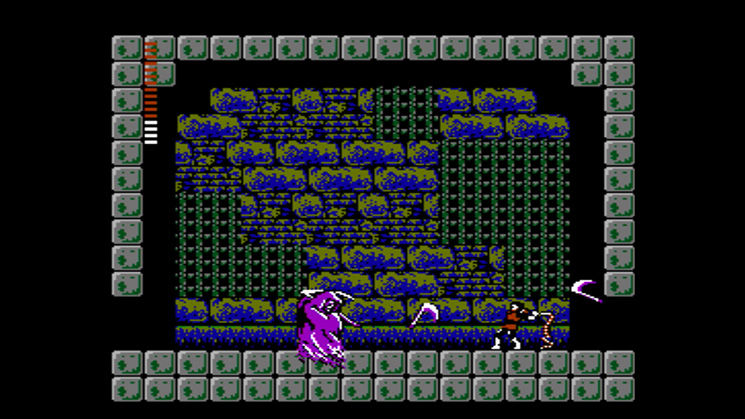
After the success of Castlevania, Konami aimed to build upon what they had created by expanding on the core gameplay with more challenging enemies, a more devious castle and threats which would have the player on edge at every turn. The result was Castlevania II: Simon’s Quest, an admirable if flawed second attempt to put down Dracula and his dark intentions for good.
Featuring the same side-scrolling exploration and platforming that the first game did, Simon’s Quest also offered NPCs to interact with that would provide hints to puzzles, many integral to progressing through the game.
Unfortunately, these NPCs proved too cryptic and deceptive in their hints to be helpful, and that was only in the Japanese version. The English translations of these characters’ dialogue was so bad that many found themselves unable to solve the game’s puzzles, or that they’d solved them randomly in ways that hadn’t been hinted at.
It made for a frustrating experience that many players had to struggle through, and dwarfed the admittedly challenging bosses in terms of how much frustration it caused those who played through the game.
The Best Castlevania Games, All 30 Ranked From Worst to Best
24. Castlevania Legends
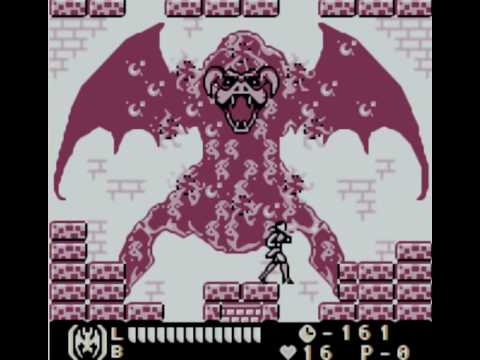
There are many factors which one could point to as to why Castlevania Legends wasn’t as good as it could have been. On one hand, it was the third entry in the series’ handheld gaming outings and the teams behind them had already pushed the hardware as far as it would go.
The limitations weighing down the game’s music and graphics shone through stronger than ever, and even with an original story separate from the series’ main timeline, there was little to draw in players that they couldn’t find utilized better in other entries.
On the other hand, it was released after Castlevania: Symphony of the Night, which redefined what the series’ gameplay was and would be. As such, its reliance on the old framework felt outdated and boring to many players, causing it heavy criticism.
Regardless, the end result was a title that failed to live up to the series’ expectations and continues to be a title that is widely overlooked and forgotten about.
23. Castlevania Lords of Shadow 2
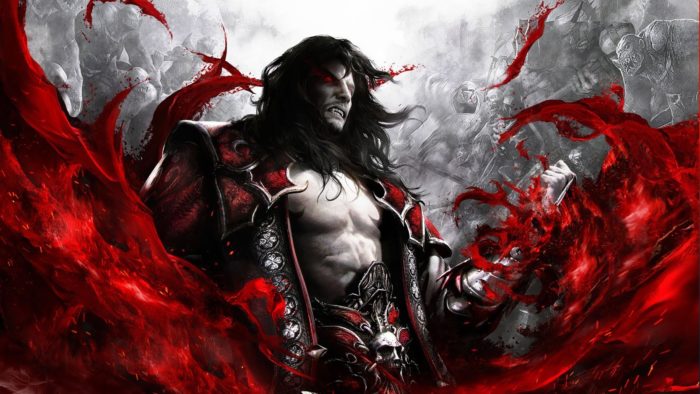
After the surprise hit that was Castlevania: Lords of Shadow, fans were eager to see how Konami and developer MercurySteam would follow up what was arguably the best 3D Castlevania. Sadly, they’d follow it up with a title more in line with the lackluster entries they’d come to know as Castlevania when it tried to jump to 3D.
Set several centuries after the events of Lords of Shadow, former vampire hunter turned ruler of darkness Gabriel Belmont finds himself revived in the modern day when cultists attempt to resurrect Satan, whom Gabriel has held at bay for half a millennia as the dark count Dracula.
Determined to stop this even worse evil from rising, he takes up the Vampire Killer whip one last time to put a stop to the prince of evil’s rise and end his own centuries of suffering.
Though the premise and aesthetic fit Castlevania to a tee while bringing the series forward in interesting ways, other elements like the punishing gameplay and lackluster modern-day segments brought the game down hard from the heights of its predecessor. It’s not clear if this sealed the fate of the Lords of Shadow segment of the series, but it’s unanimous among fans that it would be a sour note to end on.
22. Castlevania: Curse of Darkness

Even if they weren’t perfect transitions to a new style of gameplay for the series, the PlayStation 2 era of 3D Castlevania games did start to move in the right direction. Castlevania: Curse of Darkness was one of them, albeit with a few gameplay elements that didn’t pan out perfectly.
As the Devil Forgemaster Hector, players embark on a revenge-fueled action adventure across Transylvania in search of the man who killed their wife. Along the way, they can wield a wide range of weapons from swords and axes to enchanted knuckles, as well as recruit Innocent Devils to their cause for aide in combat and solving puzzles.
Though some of the title’s atmosphere and aesthetic was lost as a result of the game taking place outside of Dracula’s castle, and the gameplay didn’t have enough variety to keep combat from feeling repetitive near the end, the controls finally felt suitable and the story was an intriguing expansion on the Castlevania universe.
Its varied choices in equipment also showed how Symphony of the Night’s more varied options could be translated to future titles, expanding on how players could take on the forces of darkness with more than just the Vampire Killer.
The Best Castlevania Games, All 30 Ranked From Worst to Best
21. Castlevania: Harmony of Despair

Though the Castlevania series has seen dozens of entries over the years, it has still only seen two multiplayer experiences to date. Whereas Judgement was a train wreck, the latter, more traditional title Castlevania: Harmony of Despair was far better executed. Focused entirely on gameplay, it allowed up to four players to team up or fight each other in expansive maps full of items to collect, enemies to face and bosses to vanquish.
They could also choose from several characters across the series’ 2D entries along with all of the equipment and techniques they had to offer.
Sadly, it didn’t prove to be a lasting experience for any but the most dedicated fans. With only a limited number of map variations and no story to drive the action, the multiplayer rang hollow unless players enjoyed an endless round of boss rush-esque gameplay. Still, it showed the potential for a properly realized multiplayer game in the franchise should the series ever veer in that direction again.
20. Castlevania: The Adventure
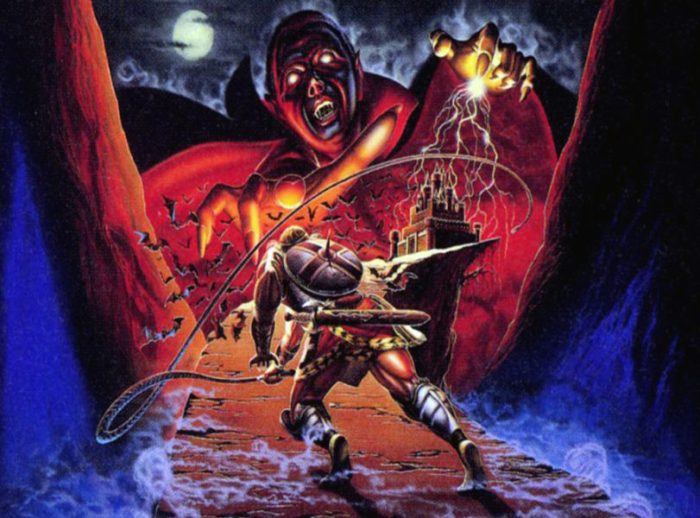
As a first attempt at bringing the Castlevania series to portable consoles, Castlevania: The Adventure was admirable in what it managed to do. Set across four stages, it took players on a quest to vanquish Dracula comparable with its console counterparts. The game’s music translated amicably enough to the new hardware as well, with dulcet tones that would make even the most discerning classic video game music fan nod in approval.
Likewise, the gameplay allowed players to jump and whip their way through plenty of devious enemies and hazards, forcing them to time their movements perfectly if they wanted to see the journey to its conclusion.
That said, there were also areas where the limitations of the hardware held it back. Unlike full-scale entries in the series, The Adventure acted as a straight side-scroller, only allowing players to move left to right through every level. It also has an undeniably steep difficulty curve that would leave all but the most die-hard fan ready to set it down in favor of a more modern entry.
19. Castlevania II: Belmont’s Revenge

Following the series’ first attempt at a handheld entry, Castlevania’s developers took note of its shortcomings and sought to improve on the next iteration. This resulted in Castlevania II: Belmont’s Revenge, an applaudable step up from what had come before it.
Along with all of the strengths of The Adventure, Belmont’s Revenge brought some much-needed additions to the gameplay including the reintroduction of sub-weapons like axes and holy water. This allowed not only for more variety in how players dispatched the evil forces of Dracula, but also a leg-up against the game’s challenges and the feel of a true-blue Castlevania title.
Sadly, Belmont’s Revenge still couldn’t escape the limitations of its hardware. The game was still limited in how it allowed players to move and platform, and the notably slow character speed could hamper immersion. It was also a considerably short experience, making it less than ideal for those who wanted more meat to their vampire hunting experience.
The Best Castlevania Games, All 30 Ranked From Worst to Best
18. Castlevania: Lords of Shadow – Mirror of Fate
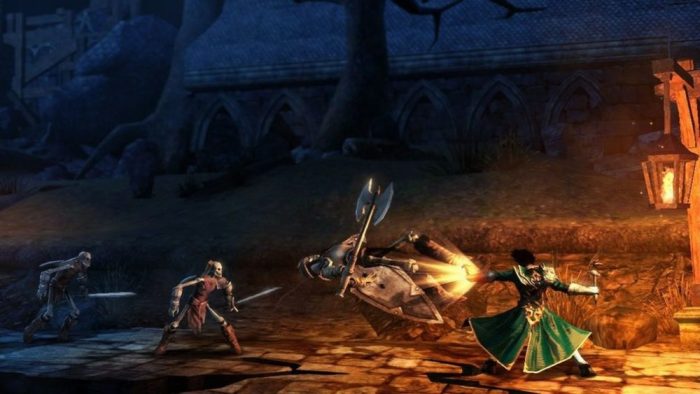
One of the most recent entries in the series, Castlevania: Lords of Shadow – Mirror of Fate did plenty right in its attempt to move the series forward. Fleshing out the newly established lore of Lords of Shadow, it places players in the roles of several Belmont family members from across the centuries as they try to take down their vampiric ancestor Gabriel, now known as Dracula.
Utilizing a 2.5-D art style, it offered the side-scrolling action platforming action fans had come to expect alongside a level-based progression system, different equipment and weapons to wield, and plenty of puzzles to solve throughout each character’s sordid journey.
Unfortunately, it also lost some core components in its attempts to cater to the modern gaming audience. Mirror of Fate lacked much of the difficulty and challenge which made success so gratifying in past entries, to the point where few if any enemies and bosses posed a threat to players.
Its exploration elements were likewise hampered by a more directed design which pointed players more readily to their objective, making the game feel much more linear as a result. It’s still a journey worth seeing for those who enjoy the series, but it also shows just how much work would be needed should the series ever build off of the material it presents.
17. Castlevania: Lament of Innocence
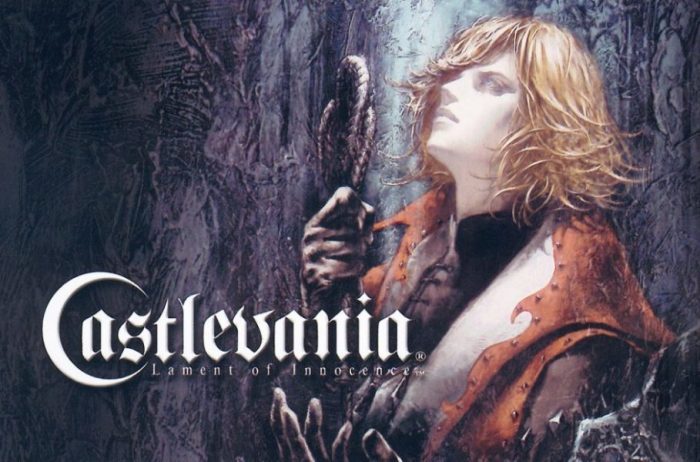
After a rocky first few steps into the realm of 3D gaming, the Castlevania finally found some footing with Lament of Innocence. A prequel title to the established series, it follows Leon Belmont as he tries to rescue his wife-to-be from a vampire named Walter Bernhard. Armed with a whip and enchanted gauntlets, he must overcome five terrifying monsters in order to reach the conniving Walter before it’s too late, and before an even more nefarious being can be created.
Full of all the whip flailing action and exploration one would expect from a Castlevania title, as well as the action adventure elements and platforming that was common during the PlayStation 2 era of gaming, Lament of Innocence managed to blend together what people loved about older entries with the ever-developing norms of 3D gameplay in a way that wasn’t frustrating and, more importantly, was fun.
The only problem was that it played it safe, never fully utilizing the hardware. Levels could feel plain and repetitive, and more often than not its story and characters were the only thing that distinguished it as a Castlevania title.
Regardless, it was a welcome step forward for the series that many were happy to see, and a precursor to what the series could one day do in the 3D realm.
16. Castlevania: The Dracula X Chronicles

A 2.5-D remake of the renowned Rondo of Blood – as well as its first North American localization – Castlevania: The Dracula X Chronicles brought plenty to the table for both old fans of the iconic entry and those looking to experience it for the first time. As Richter Belmont, players must take on Dracula and his minions, as well as aid several individuals trapped in his castle along the way.
Armed with the usual array of tools at the disposal of a Belmont, they can whip, hack, slash and burn their way through a number of different enemies as they travel from a distant country village to the iconic castle itself.
A solid title in its own right, The Dracula X Chronicles also translated some of the best elements of Rondo of Blood to a new console generation alongside several bonuses, like being able to play as other characters throughout the campaign.
Unfortunately, it still didn’t manage to capture the magic of the original that arguably perfected Castlevania’s original design framework before it was redefined by Symphony of the Night. Still, it’s a worthy entry in the series and a fine alternative for those who couldn’t play the original.
The Best Castlevania Games, All 30 Ranked From Worst to Best
15. Castlevania: The Adventure Rebirth
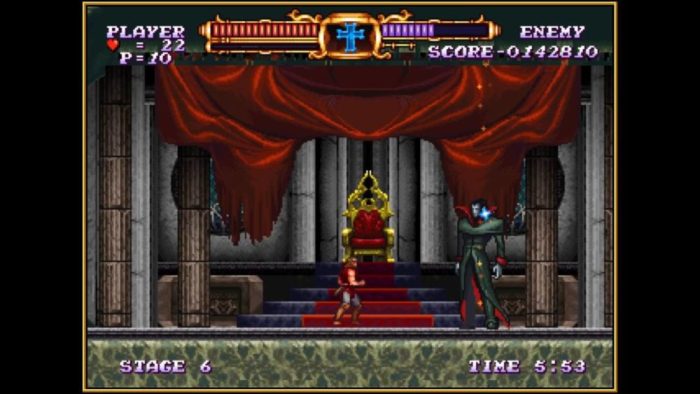
It takes a lot for a remake of a past title to feel like an entirely different game, but that’s how much of a step up from the original Castlevania: The Adventure ReBirth was. Boasting silky smooth gameplay, refined graphics and a slew of redesigned bosses and enemies for players to take on, the game realized the ambitions the original had but was unable to fulfill due to hardware limitations.
It likewise allowed for the use of sub-weapons like axes and knives, a gameplay element absent from the original, and offered players a ranged attack where flames could be launched from Christopher’s whip.
Unfortunately, there was only so much that could be built upon from the original. The game was still punishingly difficult, and even with an increased total of six levels, it still felt short and, as a result of its difficulty, didn’t have the same replay value as other titles. At the very least though, it was a much more suitable option for those who wanted to experience the title but didn’t want to suffer through the flaws of the original.
14. Castlevania
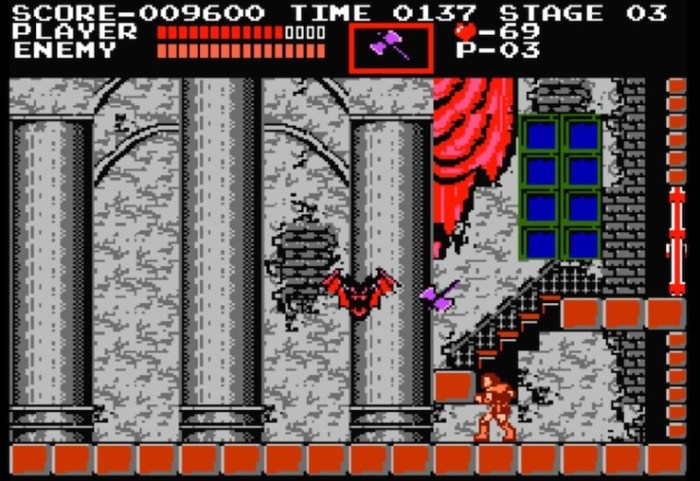
The game that started it all, Castlevania was a pioneer in NES game design. As the vampire hunter Simon Belmont, players were tasked with the elimination of Count Dracula and his evil hoards, from swarms of blood-sucking bats to Death himself. It wouldn’t be an easy task either, as players had to storm his castle armed only with an enchanted whip and whatever weapons they could find along the way.
And yet, with the right moves and an eye for the different secrets and power-ups scattered throughout the halls of the Count’s treacherous castle, one could overcome this monumental task and prove themselves a true vampire hunter.
Full of action-platforming and exploration that would later define a genre, Castlevania is worthy of the legacy it created. Sure, it hasn’t aged as gracefully as some other entries on this list and its steep difficulty curve would give most modern gamers plenty to scream in frustration over, but the fact that it still plays well and can provide a decent gaming experience to this day is a testament to its quality.
13. Castlevania Chronicles
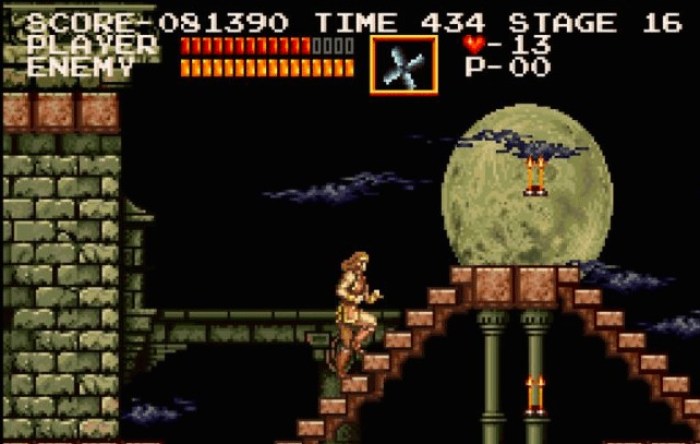
Like with what ReBirth did for Castlevania: The Adventure, Castlevania Chronicles realized the unrealized potential of the original Castlevania and brought it forward in new and interesting ways.
Once again making their way through Dracula’s Castle to confront the blood-sucking count, players were treated to a graphically enhanced version of the game complete with more detailed areas, new enemy and item layouts and more dynamic boss fights.
Likewise, players could also take on a new game plus mode that increased the game’s difficulty and offered greater rewards for those who displayed more skillful approaches to the game.
Like ReBirth though, it brought plenty of flaws from the original along for the ride. The base difficulty could be devastatingly tough at times, and past the graphical updates, the game at times felt like it was trying to ape the original Castlevania experience instead of truly bring it forward. And yet, even with these issues, it’s still a fine way to experience the first game’s bosses and levels in a new way, and an excellent way for newcomers to experience the original games’ formula.
The Best Castlevania Games, All 30 Ranked From Worst to Best
12. Castlevania Bloodlines
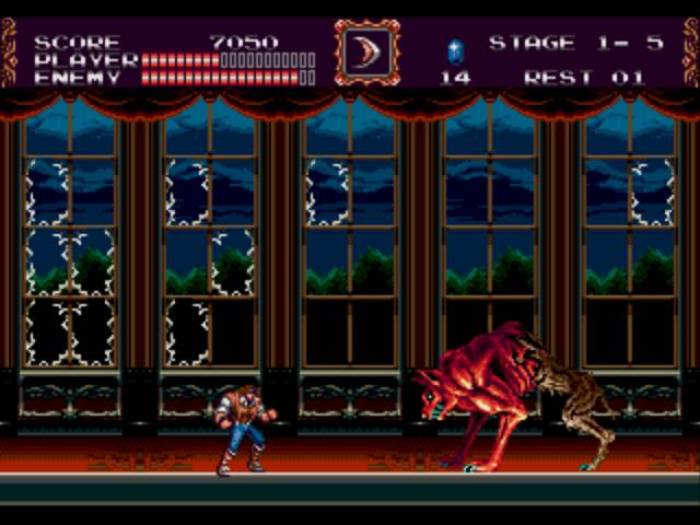
Released amid the Console Wars of the ’90s between Sega and Nintendo, Castlevania Bloodlines was one of the best titles in the series thanks to the extra, gory detail afforded to it by the Sega Genesis. As John Morris, a distant descendant of the Belmont family, players are tasked with once again stopping the spread of evil across the land.
This time though, it’s by the hand of Elizabeth Bartley, Dracula’s niece and a powerful vampire in her own right, and Morris and his allies will have to enlist everything at their disposal in order to stop her from resurrecting the full power of Dracula to wreak havoc on Europe once again.
Host to enemy and level designs that feel right at home on the “next level” console, Bloodlines offered a fantastic entry into the series’ using its original design framework while also introducing new ideas. It did suffer from delayed play speed due to hardware issues which did hamper the experience some, but it remains a title that is easily repayable and well worth the challenge it can bring to players.
11. Castlevania: Harmony of Dissonance

The second Game Boy Advance entry in the Castlevania franchise’s history, Castlevania: Harmony of Dissonance still showed an astounding amount of realized potential despite some flaws. As Juste Belmont, players must make their way through Dracula’s Castle in an effort to save their childhood friend Lydie.
He is joined and aided by their friend Maxim, though it soon becomes clear that his inclusion in the rescue mission may be more of a deadly hindrance than a boon.
Touting the same experience-based level progression system as Symphony of the Night, Harmony of Dissonance blended elements both new and old from the series for a stellar handheld gaming experience on par with what had been introduced so far thanks to Circle of the Moon. Alongside the classic whip and sub-weapon combat, it also allowed for enhancements through magic which varied the gameplay and could keep players on their toes as they took on the many different enemies the castle threw at them.
Admittedly, it was the worst out of the GBA entries in the series due to less than ideal character animations and a flat soundtrack. However, considering the quality all three possess, it’s far from the worst title in the series and an easy one to point new fans toward to get a feel for the series.
10. Castlevania III: Dracula’s Curse

Arguably the best of the original NES Castlevania titles, Castlevania III: Dracula’s Curse brought out the best the series had to offer given the hardware’s limitations. As players made their way through Dracula’s castle yet again, they were met with an array of devious traps and insidious monsters new and old, all eager to end the life of the brave vampire hunter before he stopped the resurrection of evil incarnate.
Platforming was tight and precise, the music was as iconic as ever and it was endlessly entertaining to whip your way through wave after wave of enemies as you made your way to that final confrontation at the castle’s highest chamber.
The game’s only real flaw is that it is crushingly hard, with the last boss fight in particular still standing as one of the most difficult in all of gaming. You’ll have to bash your head against more than a few walls before the title is through, but for those willing to endure its roughest patches, it’s easily the best way to experience the classic games at their best.
The Best Castlevania Games, All 30 Ranked From Worst to Best
9. Castlevania: Circle of the Moon

A spin-off from the mainline games, Castlevania: Circle of the Moon introduced players to a new line of vampire hunters brought up to defend the world from Dracula’s resurrection. As Nathan Graves, a young man with immense potential as a vampire hunter, they must make their way through the devilish castle to save their mentor and prevent Dracula’s resurrection.
Unfortunately, the Count can still work his magic from beyond the mortal realm, and will do anything to stop the human race from thwarting his rise once again.
Host to the usual whip-based combat, platforming and exploration the series is known for, Circle of the Moon also introduced a new magic system that offered several different combinations and attacks with their own benefits and boosts.
It did suffer from some early GBA design flaws including dark graphics and stilted character animations, but even today it stands as one of the best in the series and a promising direction the series could have taken away from the Belmont clan’s tale.
8. Castlevania: Rondo of Blood

One of the best utilizations of Castlevania’s original design framework, Castlevania: Rondo of Blood is an iconic entry in the series for many reasons. While it does lean on the same “take down Dracula as a Belmont with a whip” storyline as so many entries before it, the game also provided one of the most polished and refined experiences the series had ever seen.
The level design was interesting and well paced, enemies new and old felt like they belonged in the castle’s corridors and the bosses presented some of the most entertaining and iconic fights in the series.
The only real downside to the game is that it wasn’t released in its entirety in the United States for several years. Sure, there was the port of the game made for the SNES and a 2.5-D remake released several years later for PSP (see the earlier entries on this list), but they couldn’t capture the magic of the original version. Fans did find a way around this through ROMs, imports and other methods, but it’s still a shame such a stellar entry in the series had to jump through so many hoops to reach its fans overseas.
7. Castlevania: Lords of Shadow

It took a few console generations, a series reboot and the help of iconic video game director Hideo Kojima and his team, but in 2010 Konami finally delivered a 3D Castlevania game worthy of the series’ legacy.
As Gabriel Belmont, a holy knight who wanders the land in search of the Lords of Shadow, players are tasked with uncovering the reason behind a sinister cult’s plan to keep the dead from reaching Heaven and allowing evil creatures to wander the land.
Alongside a chain whip weapon known as a combat cross, they’ll also have to learn new combos and abilities along the way to take on everything from vampires and werewolves to ancient titans of earth and stone.
Taking the series in a number of new directions all at once, Lords of Shadow was the perfect mix of experimentation and homage to past entries. It brought a fresh new take on the characters and their world’s lore to the forefront, and even if it did borrow a bit from other games of the time, it did so in a way that was fun from a gameplay perspective and still maintained enough of what Castlevania was to keep fans excited for more.
The Best Castlevania Games, All 30 Ranked From Worst to Best
6. Castlevania: Order of Ecclesia
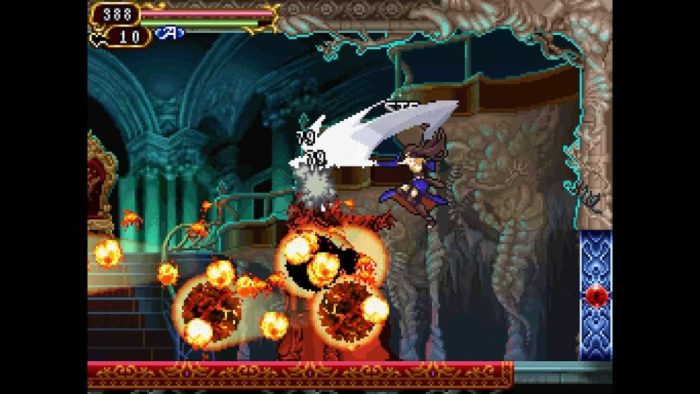
The Nintendo DS saw some of the best entries in the Castlevania series of all time, and Order of Ecclesia was no exception. While the Belmont clan had the Vampire Killer whip at their disposal, other individuals and groups found ways to combat Dracula through magic and dark rituals that granted them otherworldly powers.
One such group, the Order of Ecclesia, harnessed glyphs fueled by magic which allowed them to combat Dracula’s evil forces while the Belmont clan is absent. Shanoa, a member of the group and prodigal user of the glyphs, is chosen as the vessel for the Dominos Glyphs, which contain Dracula’s sealed powers and are the only way to defeat him without the Vampire Killer.
Before she can take them into herself, however, her childhood friend Albus interrupts the ceremony and makes off with the glyphs. Unsure of his intentions, she pursues him in the hopes of reclaiming the glyphs before it’s too late.
Like Symphony of the Night, Order of Ecclesia offers the same action platforming design style minus the inclusion of the Vampire Killer. Instead, Shanoa utilizes a variety of different weapons and glyphs to combat enemies and bosses, and can level these abilities up alongside her base stats.
The boss fights can get pretty brutal, especially as you near the game’s conclusion, but it’s also a blast to learn the game’s combat systems in and out. It also gives a promising glimpse of what the series could do with the gap in the Belmont’s involvement in the world, and who could fill their shoes as the slayers of Dracula.
5. Castlevania: Aria of Sorrow

Undoubtedly the best GBA offering the series ever had, Castlevania: Aria of Sorrow showed not only the true potential of the series on handheld consoles, but also the potential the series still held for innovation. As Soma, a transfer student visiting Japan in the year 2035, players find themselves drawn into a realm of monsters and darkness when a solar eclipse heralds the revival of Dracula and his fiendish castle.
To stop it, Soma will have to unlock dark abilities hidden deep within him which allow him to harness the powers of monsters he slays, and take down those who would wish to see the dark lord return to the world. The more he uses his powers, however, the clearer it becomes that his role may be more than that of a special civilian dragged into the mix.
Expanding on the lore of the series in a rich and interesting way while also introducing new gameplay mechanics into the mix, Aria of Sorrow was everything the series needed to be after so many years of taking down Dracula and his minions.
The game maintained the aesthetic the series was known for with creepy visuals, stellar music and a fantastic art style, while also introducing a new protagonist and new threats for him to face. It also spawned arguably the best of the Nintendo DS’s iterations of the series, which was no small feat considering their quality.
4. Castlevania: Portrait of Ruin

As World War II rages on and the worst of humanity is brought to the surface, Dracula’s castle rises once again to feed off of the suffering of mankind, this time under the command of the vampiric painter Victor Brauner and his ghoulish daughters.
With the Belmonts gone, the burden of sealing off this great evil falls on two new heroes: Jonathan Morris, the son of the man who stopped Dracula’s rise during World War I, and Charlotte Aulin, a powerful witch able to call on the spells and powers of ancient tomes.
Together, they’ll take on threats new and old as they make their way through Dracula’s castle, venture into new locales through the dimensional rifts of Brauner’s paintings and uncover his true intentions for raising this evil structure once again.
A blend of the classic Castlevania gameplay style, Symphony of the Night’s RPG elements and new mechanics ranging from the control of two characters simultaneously, Portrait of ruin brought everything it had to the table and was better for it. An entry jam-packed with top of the line content, it presented the series at its near best and showed there was still plenty to be done with the lore and characters of the series.
The Best Castlevania Games, All 30 Ranked From Worst to Best
3. Super Castlevania IV
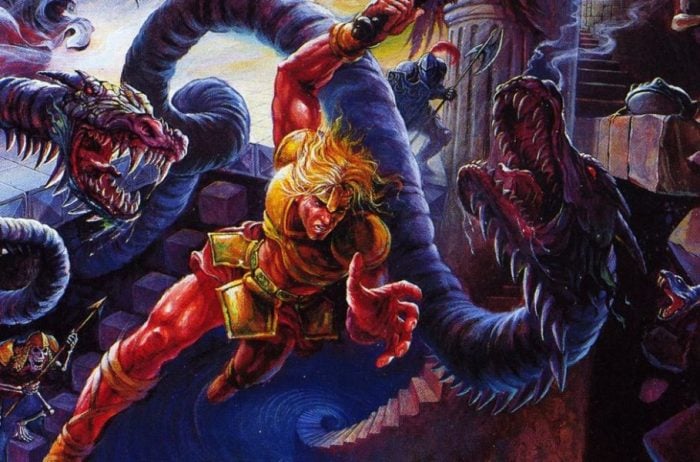
After the original trilogy of games on the NES, the Castlevania series needed to show what it could do with the new, 16-Bit hardware of the SNES. It did this and so much more with Super Castlevania IV, a title so influential that elements of it are still seen in its most recent entries.
Alongside the usual elements of needing to venture through different areas both in and outside of Dracula’s Castle, take on his unholy minions and platform past deadly traps and hazards, the game also introduced new elements such as the manipulation of the environment and an iconic new aesthetic which truly breathed life into the ghoulish world of the game.
It also introduced some of the series’ most iconic bosses and enemies, whose designs would terrorize players for years and entries to come.
Other titles may have surpassed it with the innovations they brought and their access to better hardware, but this title still stands as the series art nearly the peak of what it could do.
2. Castlevania: Dawn of Sorrow

Among the phenomenal entries in the series seen on the GBA and DS, Dawn of Sorrow was arguably the best and brightest. Picking up one year after the events of Aria of Sorrow, players are once again placed in the role of Soma as he must take on forces which wish to see Dracula revived.
Unlike the last time Dracula was nearly revived though, this new group has found two candidates who are well aware of their suitability as Dracula’s new vessel and are eager to obtain his power.
Soma readily answers the call to action, but unfortunately, the souls gained through his adventures in Dracula’s castle have vanished with time, meaning he’ll have to take on new monsters to harness their souls, craft powerful weapons and take on these individuals before they can bring about a new dark age for humanity.
Filled to bursting with top of the line gameplay, customization options for how one plays and more than a few memorable boss fights, Dawn of Sorrow marked the highest point for the series’ handheld entries. Hours could be spent searching the halls and byways of the game’s areas, hunting monsters souls and using them to craft weapons and skills suited to whatever play style suited person best.
It was exactly what fans loved about the series, and what they’d hoped it could become with future iterations.
1. Castlevania: Symphony of the Night

After the events of Rondo of Blood, Dracula’s son Alucard finds his father’s castle risen yet again and the Belmont clan nowhere to be found. Curious as to why, he sets off into the castle grounds and soon discovers his former ally, Richter Belmont, is behind the castle’s resurrection. Unsure as to why, he begins his journey to stop his friend, defeat his father’s minions and once again treat the world to a time of peace without fear of the dark lord’s control.
Castlevania: Symphony of the Night is more than just the greatest Castlevania game of all time. It’s arguably one of the greatest games of all time. Sure, its voice acting was and is laughably bad, and yeah, the turning the castle upside down was a bit of a cop-out in terms of creating new content. And yet, considering how much fun the gameplay is, both easily overlooked and, in the case of the expanded playtime given by the castle flip, more than welcome.
It’s RPG elements blend perfectly with both the series’ action platforming and exploration elements, and uncovering new equipment and abilities to test out could drive hours of playtime. It is the title to play if you love Castlevania or want to see what the series is like, and luckily for the gaming community, it shows no signs of fading into obscurity anytime soon.
What’s your favorite Castlevania title? Let us know in the comments section below, and be sure to stay tuned for our thoughts on the Castlevania animated series’ second season after it premieres Oct. 26.

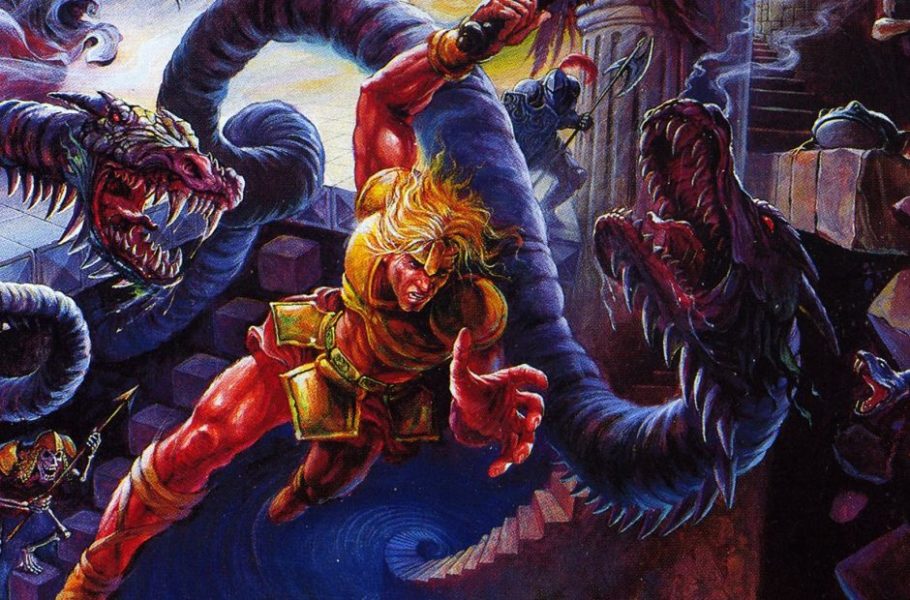



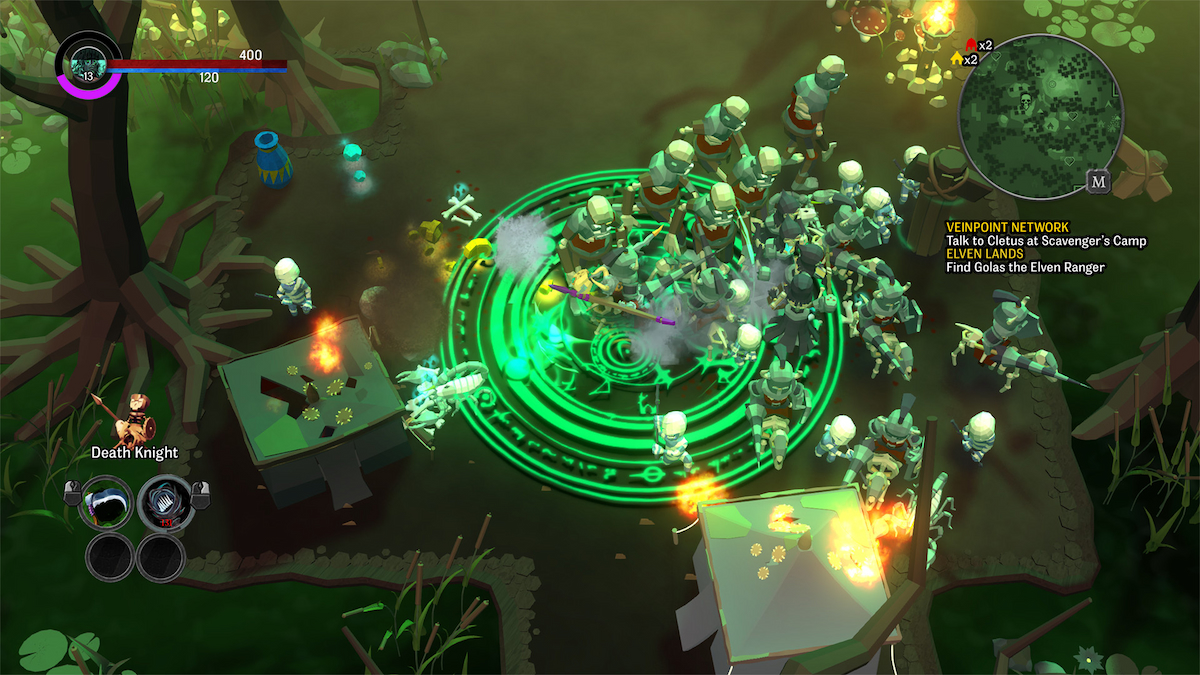



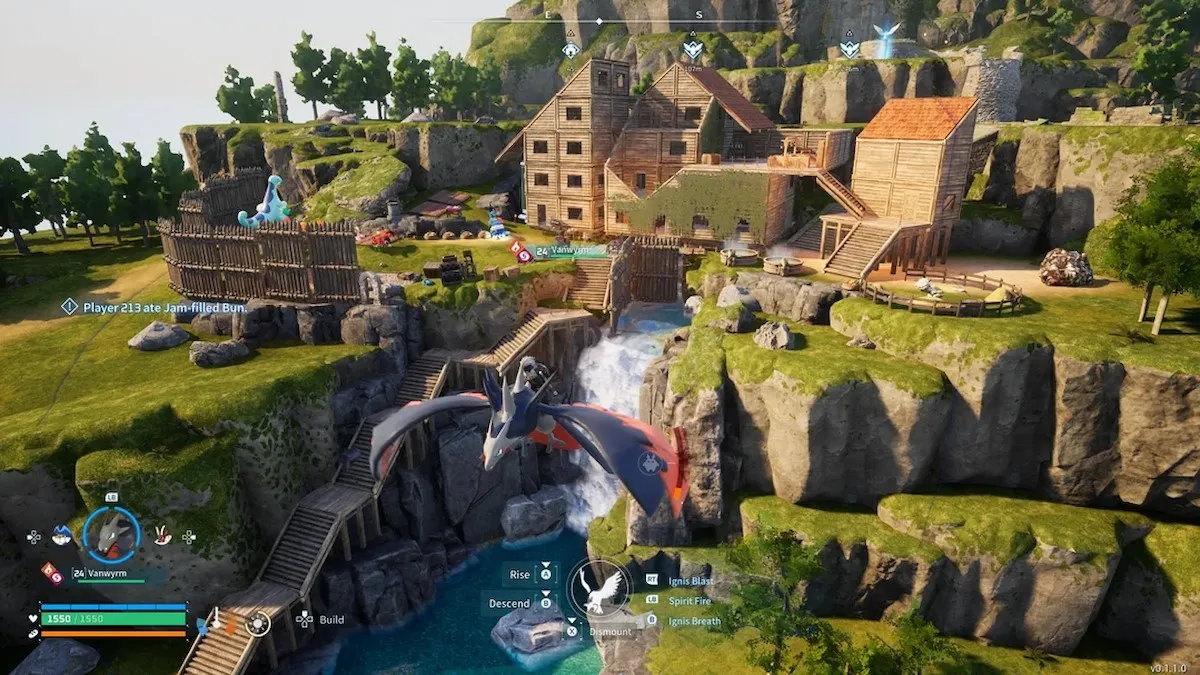



Updated: Oct 23, 2018 03:29 pm